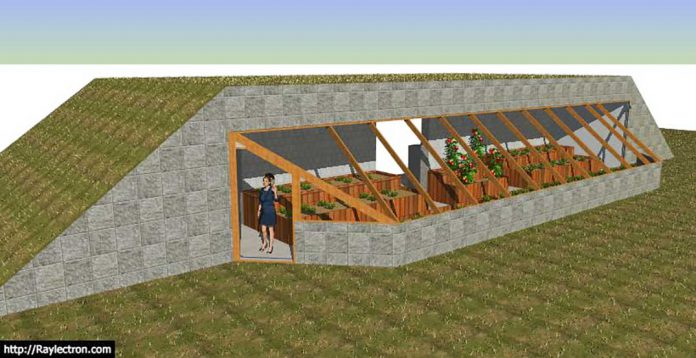KAGAWONG—Approximately 30 interested landowners, municipal representatives and farmers attended an annual deer management meeting last Wednesday evening led by Wayne Selinger, management biologist for the MNRF (Ministry of Natural Resources and Forestry). An update covering areas wildlife management units (WMU) 43A (Western Manitoulin) and 43B (Burpeee/Mills east) was presented. This was their opportunity to ask questions about the past season and raise any concerns for the upcoming hunt.
Data has been collected by the MNRF since 1981. During the past 37 years, there have been reported peaks (such as in 2003) and decreases (2005-2009) followed by increases (2010-2017) in the number of deer harvested.
In 1982 there were 2,550 tags available. By 2005-2006, it more than doubled to 6,000. Due to back to back harsh winters, the number dropped to 2,500 in 2014. It rose back up to 6,000 in 2017 which is 100 percent for the area (43B). Six thousand and twenty hunters applied in 2017, which meant 20 did not get a tag.
“Hunter success,” stated Mr. Selinger, “had a long term decline in 43A. It has levelled out the past 10 to 15 years. The goal is to maintain the deer population in this area.”
WMU 43B reported a drop in 2009, was stable from 2010-2014 and “has been climbing ever since. There was an increase from 2014 to 2017,” Mr. Selinger said. “Hunting pressure in this area is extremely high. The goal is to decrease the population by targeting agricultural and hot municipal problem areas.”
Mild winters in 2016 and 2017 produced a good fawn crop. 2018 was relatively mild, however the persistent cold snap in January and late “green-up” caused the fawns to burn a lot of calories to keep warm. “This will have some impact on the deer herd,” stated Mr. Selinger.
“Finding the balance is difficult,” the management biologist added. While it is part of Ontario’s natural heritage (for some) there are divergent views: values versus impact. There are substantial ecological, social and economical benefits. On the other side, there is damage to crops (which can create a significant financial impact), residential properties and the ecosystem, damage to personal vehicles when a deer runs out in front of a vehicle on the highway and social acceptance.
An accurate inventory of deer is not possible due to the fact that they are not counted. “The harvest is used as an index,” Mr. Selinger said.
In the early 1900s there were 20,000 deer. By the mid-‘50s this number doubled. Due to severe winters and lack of harvest control, the number declined over a 25-year period to a low of about 10,000 in 1980. Since that time, due to harvest control and landscape changes in the deer’s favour, the annual provincial harvest has increased to 100,000.
Mr. Selinger addressed the issue of deer as nuisance. Ideally, he explained. there should be no more than three deer per square kilometre.
“Until the 1900s,” stated Ian Anderson, a retired conservation officer, “there were no deer on Manitoulin Island.”
Crop damage occurs when five to 10 deer occupy a square kilometer; significant damage above 10 deer and ecological damage when 10 to 20 deer live in this limited space. Carrying capacity is 20 deer per square kilometer in the absence of severe winters.
“When winter conditions improve, deer will improve and the population will increase,” Mr. Selinger continued. “Human/deer conflicts will not be eliminated,” he explained, “but it can be mitigated to some extent.”
Hunting is the tool to manage deer abundance; antlerless tags, additional seals and DRAs (deer removal authorization) along with designated hot spots, Mr. Selinger said.
Some recommendations for the upcoming hunt presented by Mr. Selinger were to increase the number of tags in 43A to 500 and keep the number the same in 43B: 6,000; implement seals for everyone who applies in the ‘hot spots,’ which includes Bidwell, Gordon and Barrie Island, and issue DRAs where required to manage agricultural impact.
Allotment of additional tags were suggested as follows: Gore Bay and Barrie Island, an additional 50 each; Gordon and Bidwell, 200 each; and 500 to be spread out Island-wide.
“Deer are currently being harvested at a high level—we can only do so much to curb nature,” Mr. Selinger said.
Deer will move to the south shore to get out of the bush if the snow is too deep. It is instinctual to move south as there is less snow.
“Mild winters are coming,” stated Mr. Selinger.
Many of the farmers and landowners voiced concerns regarding over hunting in some areas, high deer populations that jeopardized their livelihood and the application process for a DRA. Mr. Selinger stated he had only two applications in the 2017 season.
“The DRA is not a hunt,” stated Mr. Selinger. It is for does and fawns only and is available from August 15 to October 31 only: “not through the hunt season (includes archery, rifle and black powder). An increase of DRA applications is expected this year.”
Mr. Selinger stated, “we will always have lots of deer and lots of farmers not wanting deer on their land. We don’t want to wait until number max out and things get ugly (a high population of deer get sick).”
“We don’t know exactly what implications will be from the 2017-2018 winter season,” the biologist added.
Mr. Anderson told the audience that he spent “seven days a week in the bush” and reported some of the fawns that would normally have perished in March made it through. He said he saw severe signs of malnutrition with muscle mass was missing in the hind quarters. (Of one fawn that did not survive, it should have weighed 90 pounds and was a mere 44 pounds.) The bone marrow, which should be white and waxy, was the consistency and colour of tomato soup. The fawn had starved to death.
“They will be in a whole lot of trouble,” he stated.
Mr. Selinger noted deer on the North Shore “look great.” Our winter, stated Mr. Anderson, has been too long.





